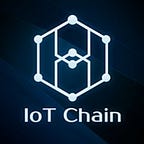According to a report by Ericsson Mobility, it is expected that there will be upwards of 28 billion connected devices worldwide by 2021. By 2025, IDC forecasts that 95% of data generated by the Internet of Things will be produced in real-time.
The Era of the Internet of Things Has Arrived
The IoT Chain Foundation (ITC) advocates that data sovereignty belongs to the user, and the value generated by data should be shared with the producer. In the IoT Chain ecosystem, we use public-key cryptography to give each IoT device a unique ID. Once generated, it cannot be changed. Information is collected by standard wireless communication technologies such as RFID, GPS, and Zigbee, and this data becomes part of a distributed collaborative system. Based on the IoT Chain data classification solution, data will be classified and encrypted, and then stored locally, on-chain, or through distributed systems depending on the scenario. Data can be synchronized, transferred, and exchanged in a variety of use cases. Only authorized sources can invoke, access, or trade data using ITC token transactions.
Supply Chain Finance
The Problem
In a traditional financial service model, small, medium, and micro business entities cannot demonstrate their credit capabilities due to a lack of appropriate collateral. They are therefore unable to take advantage of conventional financial services. The widespread, fragmented distribution of business entities in the supply chain industry leads to asymmetric information sharing and high transaction and management costs for financial institutions.
The Solution
IoT Chain enables credible inclusive financial solutions through asset digitalization and creditization. Both upstream and downstream entities can contribute equally in data sharing, including key items such as operating assets, inventory, orders, transactions, invoices, logistics, and cash flow. This data is synchronized to a dedicated distributed data store which is transparent, traceable, and tamperproof. The data store can ultimately be used to provide a reliable credit rating by validating the repayment ability of the entity.
Due to the nature of the IoT Chain data classification scheme, financial institutions cannot acquire, use, or verify credit and asset information without permission from the data provider. Using IoT Chain smart contracts, lenders and borrowers can reach an online credit agreement to clarify rights and avoid repeat pledges. Moreover, authorized financial institutions can conduct real-time reconciliations, follow up on related asset flows, and strengthen post-lending management.
Use cases (Part 2) will be published soon.
Steemit: https://steemit.com/@iot-chain
Reddit: https://www.reddit.com/r/iotchain/
Twitter: https://twitter.com/IoT_Chain
Facebook: https://www.facebook.com/IoTChain/
